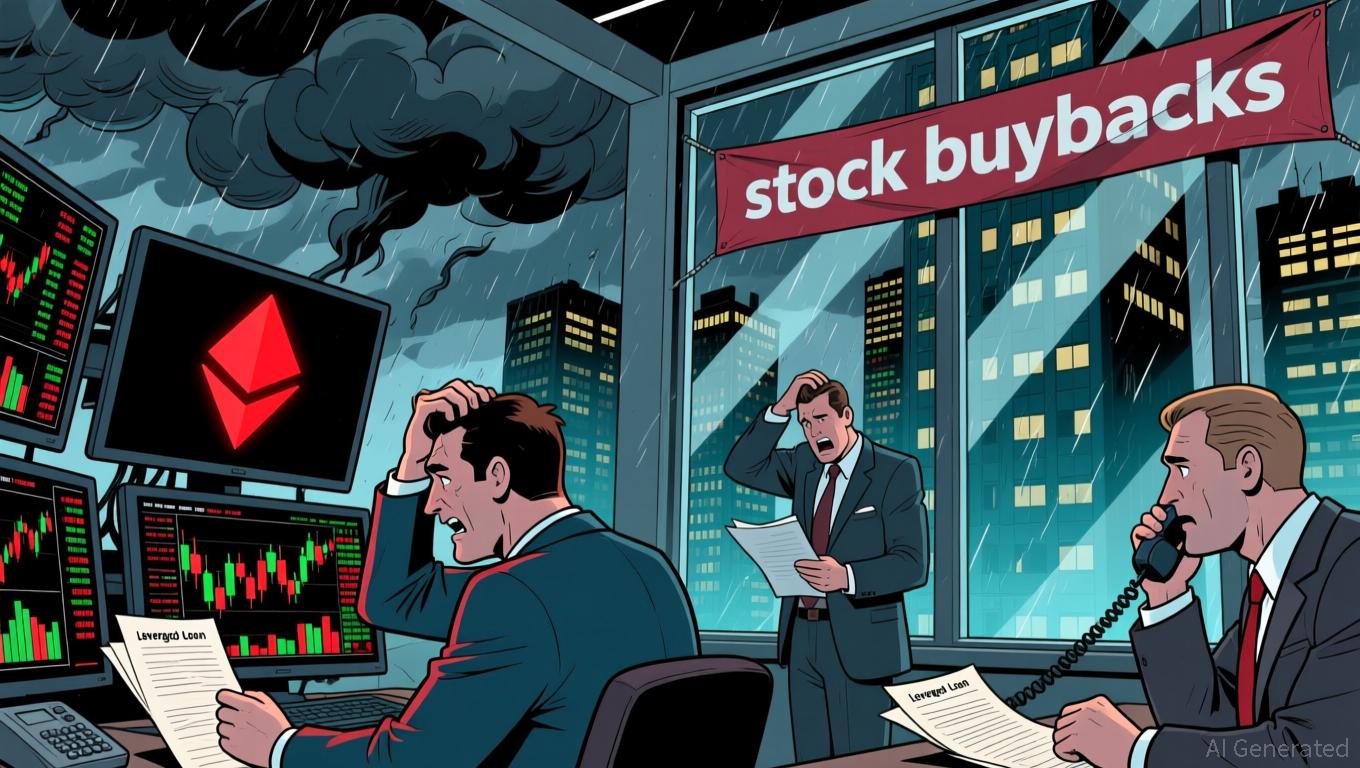Fed Steers Through Economic Uncertainty Lacking Crucial Data, Divisions Arise Over Interest Rate Direction
- The Fed faces a data gap ahead of its December meeting due to canceled/delayed October CPI and employment reports from the 43-day government shutdown. - Officials debate rate cuts amid conflicting priorities: inflation control vs. labor market risks, with some advocating cuts and others warning of "largely balanced" conditions. - Key indicators like weekly unemployment claims (1.957M) and ADP job losses highlight rising labor pressures, though pre-shutdown data shows 4.3% unemployment in August. - The da
The Federal Reserve is contending with a major lack of data as it approaches its crucial December policy meeting, after the 43-day government shutdown led to the postponement or cancellation of key economic reports—including the October consumer price index (CPI) and employment figures.
This information gap has heightened uncertainty for Fed officials, who must balance inflation concerns with signs of a cooling job market. Policymakers have voiced unease about making decisions in a "data fog," with Chair Jerome Powell stressing the need for prudence. "If you're driving in foggy conditions, you slow down," Powell remarked following the October meeting, highlighting the necessity of caution when data is incomplete
The split among Fed members mirrors broader disagreements about the direction of the economy. Christopher Waller, a strong supporter of lowering rates, advocated in a November address for continued cuts to bring monetary policy closer to neutral, while
Labor market signals further muddy the waters.
The outcome of the December meeting will depend on whether delayed reports—such as the September jobs data and weekly unemployment claims—point to a stabilizing or deteriorating labor market. A sharp rise in unemployment would make a rate cut more probable; if the job market remains steady, officials may decide to keep rates unchanged. Regardless, the lack of October CPI and employment numbers makes it much harder for the Fed to fine-tune policy in a fast-changing economic landscape.
Disclaimer: The content of this article solely reflects the author's opinion and does not represent the platform in any capacity. This article is not intended to serve as a reference for making investment decisions.
You may also like
Bitcoin Plunges 20% Unexpectedly: Unraveling the Causes of Its Wild Price Swings
- BlackRock’s ETF outflows and Bitcoin’s 20% drop to $83,461 in late 2025 highlight market instability. - Macro risks like inflation and Fed rate uncertainty amplify Bitcoin’s volatility amid geopolitical tensions. - SEC’s AI governance rules and stalled ETF approvals add regulatory ambiguity, pushing investors toward hedging strategies. - Bitcoin’s recovery hinges on reclaiming $90,000 support levels as diversified strategies counterbalance risks.
Ethereum Updates: DATs' Repurchasing of Shares Triggers ETH Sell-Offs, Intensifying the Bearish Trend
- FG Nexus sold 11,000 ETH ($33M) to repurchase 8% of shares at $3.45, below its $3.94 NAV, pushing ETH to $2,860. - DATs managing $42.7B in crypto assets face steep NAV discounts, forcing ETH sell-offs to prop up equity valuations. - FG Nexus CEO Kyle Cerminara stated the buyback strategy aims to strengthen balance sheets, but critics warn it risks accelerating ETH’s price erosion. - Ethereum’s 50/100/200-day EMAs remain descending, RSI near oversold 26, with analysts warning a $2,850 break could push ETH

Bitwise launches the first spot XRP ETF on the NYSE
MSCI considers excluding crypto-treasury companies from equity indices
